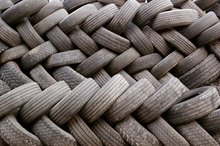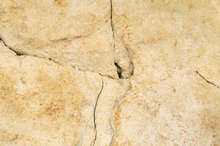What does fact checked mean?
At Healthfully, we strive to deliver objective content that is accurate and up-to-date. Our team periodically reviews articles in order to ensure content quality. The sources cited below consist of evidence from peer-reviewed journals, prominent medical organizations, academic associations, and government data.
The information contained on this site is for informational purposes only, and should not be used as a substitute for the advice of a professional health care provider. Please check with the appropriate physician regarding health questions and concerns. Although we strive to deliver accurate and up-to-date information, no guarantee to that effect is made.
Harmful Effects of Lacquer Thinner
Lacquer thinner is a solution used to break down the essential properties of lacquer by diluting and dissolving the lacquer product. Lacquer thinner is also used for cleanup, to remove adhesives from a variety of surfaces and to remove ink on metal. Because it is caustic, the thinner will rapidly deteriorate fabrics and many surfaces. Before using, it should always be tested in an inconspicuous area. Protective gear should be used on exposed body parts, particularly the eyes and hands.
Caution
Lacquer thinner contains benzene, which is known to cause cancer. It also contains toluene, which causes birth defects and other reproductive damage, according to the U. S. Department of Health and Human Services' website 12. The vapors are harmful and may affect the nervous system or brain.
Eye and Skin Irritant
What Happens If You Inhale Comet?
Learn More
One or more components of lacquer thinner is an eye irritant. One or more components of lacquer thinner is a skin irritant. Exposure to vapors or mists or direct contact may damage the skin. This includes drying and cracking, redness and burning.
- One or more components of lacquer thinner is an eye irritant.
- One or more components of lacquer thinner is a skin irritant.
Birth Defects
Studies have shown that workplace exposure to solvents put pregnant women at an increased risk of having a baby born with birth defects. According to the March of Dimes, a 1999 Canadian study showed that women exposed to solvents during the first trimester were 13 times more likely -- compared to non-exposed women -- to have a baby born with heart defects, deafness, club foot and spina bifida. Toluene, an aromatic hydrocarbon commonly found in lacquer thinner, is an ingredient that may affect the development of unborn babies.
Inhalation
Toxic Vapors Emitted From New Tires
Learn More
Breathing high concentrations of the mists or vapors of lacquer thinner may cause nose and throat irritation. Additional health effects include:
- lack of coordination
- drowsiness
- fatigue
- headache
- dizziness
Ingestion
If swallowed, one or more ingredients of lacquer thinner is toxic and may be harmful. Harmful effects of overexposure may include digestive tract irritation and signs of nervous system depression, such as:
- lack of coordination
- drowsiness
- fatigue
- headache
- dizziness
Medical Condition Aggravations
Previous medical conditions may be aggravated by exposure to lacquer thinner. Respiratory symptoms may occur with preexisting lung disorders. Preexisting skin disorders may make a user more susceptible. Preexisting liver and blood disorders may also be aggravated. Exposure to high concentrations may make a person with a preexisting heart disorder more susceptible to irregular heartbeats.
- Previous medical conditions may be aggravated by exposure to lacquer thinner.
- Preexisting skin disorders may make a user more susceptible.
Related Articles
References
Writer Bio
Carolyn Green has been a freelance writer since 1989. She has written for BETweekend, Good Old Days, Baby's World and more. A teacher from New York, she also taught in Seoul, where she wrote for a Korean publication. Her passions include world travel, nutritional research and alternative medicine. She holds a Bachelor of Arts in English literature from State University of New York, Old Westbury.








